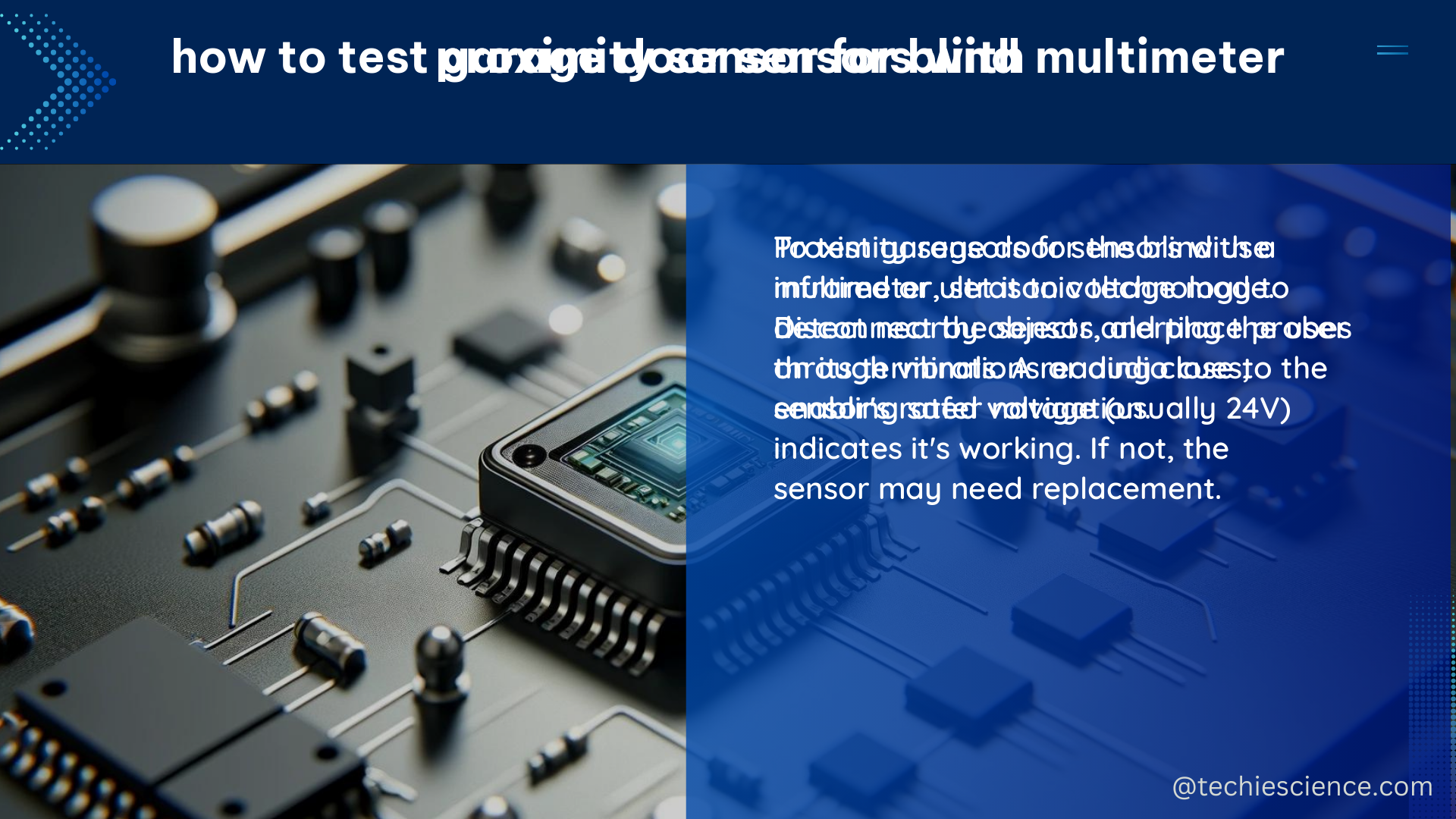Proximity sensors have emerged as a promising technology in assistive devices for the blind and visually impaired (BVI) community. These sensors can detect the presence of nearby objects, providing valuable information to help BVI individuals navigate their surroundings safely and efficiently. In this comprehensive guide, we will delve into the intricacies of proximity sensors for the blind, exploring their working principles, sensor technologies, and the latest advancements in this field.
Understanding Proximity Sensors for the Blind
Proximity sensors for the blind are designed to detect the presence and distance of obstacles in the user’s immediate environment. These sensors emit signals, such as infrared light or ultrasonic waves, and measure the time it takes for the signal to reflect off an object and return to the sensor. By analyzing the reflected signal, the sensor can determine the distance to the object, providing valuable information to the user.
Sensor Technologies
Proximity sensors for the blind utilize a variety of sensor technologies, each with its own advantages and limitations. Some of the commonly used sensor technologies include:
-
Ultrasonic Sensors: These sensors emit high-frequency sound waves and measure the time it takes for the waves to bounce back, allowing them to detect the presence and distance of objects. Ultrasonic sensors are relatively inexpensive, have a wide detection range, and can operate in various lighting conditions.
-
Infrared (IR) Sensors: Infrared sensors emit and detect infrared light, which is invisible to the human eye. These sensors can accurately measure the distance to an object by analyzing the reflected infrared light. IR sensors are compact, energy-efficient, and can operate in low-light environments.
-
Laser Rangefinders: Laser rangefinders use a laser beam to measure the distance to an object. These sensors are highly accurate and can provide precise distance information, making them suitable for applications that require high-resolution obstacle detection.
-
Lidar (Light Detection and Ranging): Lidar systems use laser light to create a detailed 3D map of the surrounding environment. By scanning the area, Lidar sensors can detect obstacles, identify their size, and provide accurate distance information to the user.
Sensor Fusion and Data Processing
To enhance the reliability and accuracy of proximity sensing for the blind, researchers have explored the concept of sensor fusion. By combining data from multiple sensor types, such as ultrasonic, infrared, and Lidar, a more comprehensive understanding of the environment can be achieved. Advanced data processing algorithms, including Kalman filters, computer vision, and deep learning, are employed to fuse and analyze the sensor data, providing the user with reliable and actionable information.
Assistive Devices Incorporating Proximity Sensors

Proximity sensors have been integrated into various assistive devices designed for the BVI community, including:
-
Smart Canes: Proximity sensors are incorporated into the tips or handles of smart canes, allowing users to detect obstacles and navigate their surroundings more safely. These canes can provide haptic feedback, vibrations, or audio alerts to inform the user of nearby objects.
-
Wearable Devices: Proximity sensors can be integrated into wearable devices, such as smart glasses, headbands, or bracelets, to provide hands-free obstacle detection and navigation assistance.
-
Robotic Guides: Autonomous robotic guides equipped with proximity sensors can assist BVI individuals in navigating indoor and outdoor environments, providing real-time obstacle detection and avoidance capabilities.
-
Smartphone Applications: Smartphone apps can leverage the built-in sensors, such as cameras and ultrasonic sensors, to provide proximity-based navigation and obstacle detection features for BVI users.
Challenges and Considerations
While proximity sensors have shown great potential in assisting the BVI community, there are several challenges and considerations that need to be addressed:
-
Reliability and Accuracy: Ensuring the reliability and accuracy of proximity sensors in real-world scenarios is crucial. Factors such as environmental conditions, sensor interference, and the complexity of the surroundings can impact the sensor’s performance.
-
Affordability and Accessibility: Assistive devices incorporating proximity sensors should be affordable and accessible to the BVI community, ensuring that these technologies can be widely adopted.
-
User Experience and Acceptance: Involving BVI individuals in the design and development process is essential to ensure that the assistive devices are user-friendly, intuitive, and meet the specific needs of the target audience.
-
Integration with Existing Tools: Proximity sensor-based assistive devices should be compatible with and integrate seamlessly with other mobility aids and personal devices used by BVI individuals, such as white canes, guide dogs, and smartphones.
-
Privacy and Data Security: Addressing privacy concerns and ensuring the secure handling of personal data collected by proximity sensors is crucial for building trust and acceptance within the BVI community.
Conclusion
Proximity sensors have emerged as a transformative technology in the field of assistive devices for the blind and visually impaired. By providing real-time information about the user’s immediate environment, these sensors can significantly enhance the safety, independence, and quality of life for BVI individuals. As research and development in this field continue to progress, we can expect to see more innovative and user-centric proximity sensor-based solutions that address the unique needs and challenges faced by the BVI community.
References
- Multi-Sensor Data Fusion Solutions for Blind and Visually Impaired: Link
- Laser Sensing and Vision Sensing Smart Blind Cane: A Review: Link
- Personal Health Data Tracking by Blind and Low-Vision People: Survey Study: Link

The lambdageeks.com Core SME Team is a group of experienced subject matter experts from diverse scientific and technical fields including Physics, Chemistry, Technology,Electronics & Electrical Engineering, Automotive, Mechanical Engineering. Our team collaborates to create high-quality, well-researched articles on a wide range of science and technology topics for the lambdageeks.com website.
All Our Senior SME are having more than 7 Years of experience in the respective fields . They are either Working Industry Professionals or assocaited With different Universities. Refer Our Authors Page to get to know About our Core SMEs.